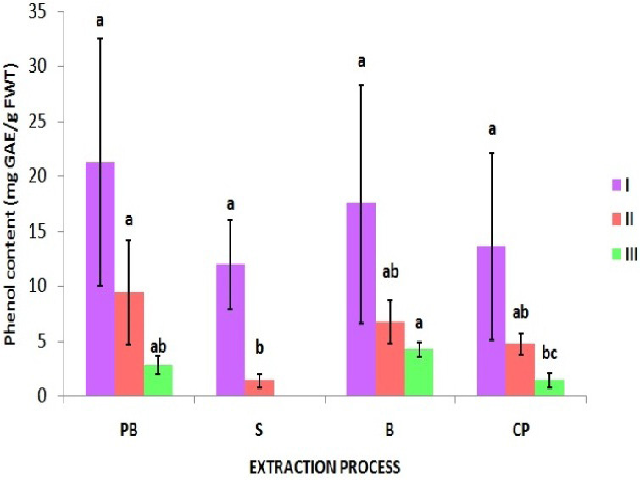Antioxidant Potential of Fraxinus Floribunda Bark Extracted through Various Aqueous Processing
DOI:
https://doi.org/10.5530/fra.2015.1.2Keywords:
Hydrothermal processing, Lipid peroxidation, Metal chelation, Percolation, Phenolics, SuperoxideAbstract
Introduction: Fraxinus floribunda Wallich (Oleaceae) is an ethno-medicinal plant found in Sikkim, India. The leaves of the plant are traditionally used in fracture, dislocation and other inflammatory conditions. From our survey, it was found that the successive aqueous decoction of the bark of this plant is prescribed to diabetic patients by herbal practitioners. In the present study the bark of Fraxinus floribunda was extracted through various boiling procedures and cold percolation method to assess the effect of process variation on the antioxidant activity. Methods: The dried bark sample of Fraxinus floribunda was subjected to three hydrothermal procedures and cold percolation method. The obtained extracts were investigated spectrophotometrically against DPPH, ABTS+, nitric oxide, superoxide and ferric reducing power. Metal chelating activity and anti-lipid peroxidation assay were also performed along with quantitative estimation of total phenolics, flavonols and ortho-dihydric phenol content. Results: The lowest IC50 values for DPPH (0.241 mg/ml), ABTS+ (0.0284 mg/ml), nitric oxide (5.3151 mg/ml), anti-lipid peroxidation assay (2.29 mg/ml) were exhibited by the extract obtained through pressure boiling. The same sample also showed highest ferric reducing power and total phenol content. Maximum total flavonol and ortho-dihydric phenol content were exhibited by the extracts obtained through normal boiling and Soxhletion respectively. Conclusion: The bark of Fraxinus floribunda contains potentially active antioxidants. Extracts obtained through pressure boiling showed significant antioxidant activity therefore it seems to be the most effective method of extraction for acquiring antioxidants. The providing data can enrich the existing comprehensive data of antioxidant activity of plant materials.
Downloads
Metrics





